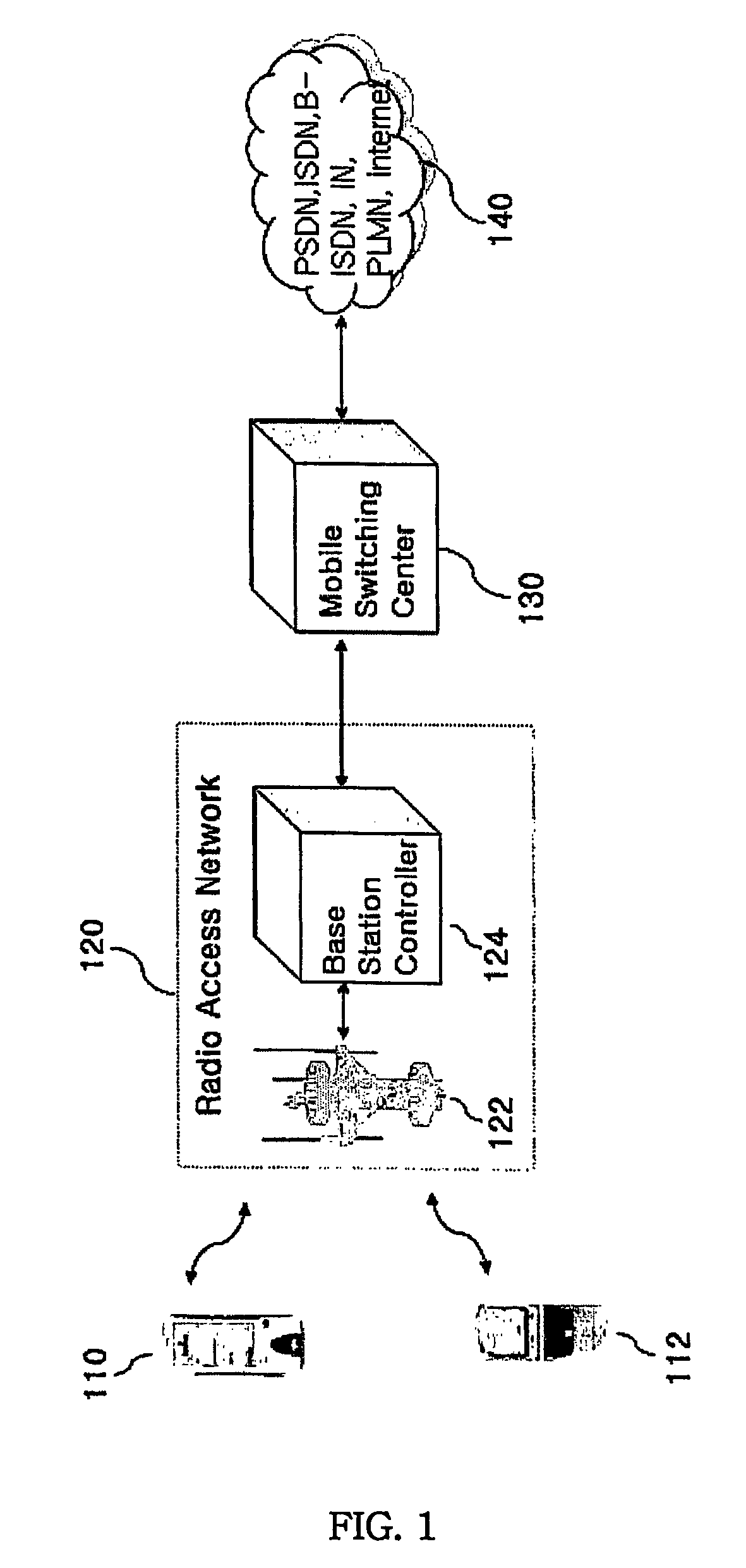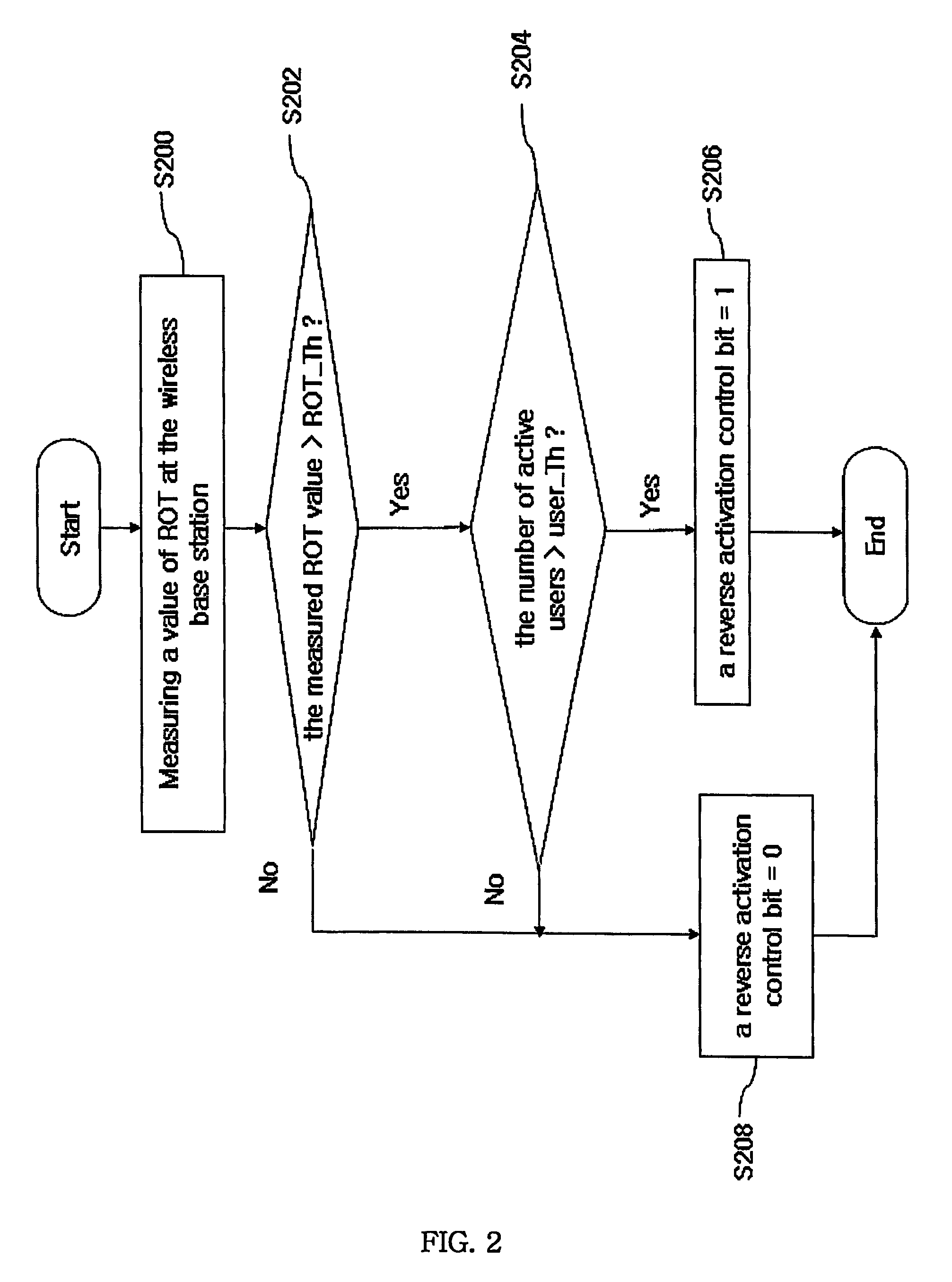Method and system for controlling reverse link rate in CDMA 1xEV-DO mobile communication system
a mobile communication system and reverse link rate technology, applied in the field of method and system for controlling the reverse link rate in the cdma 1xev-do mobile communication system, can solve the problems of interference components, method using load amount cannot perform an accurate control of the reverse link rate, and all active terminals in the cell cannot receive data service of 153.6 kbps
- Summary
- Abstract
- Description
- Claims
- Application Information
AI Technical Summary
Benefits of technology
Problems solved by technology
Method used
Image
Examples
first embodiment
[0034]First, a value of ROT is measured at the wireless base station 122 (S200). A ROT value is obtained by measuring an input signal power of demodulation end at each antenna end of the wireless base station 122 and subtracting a thermal noise power of the mobile communication system itself from the demodulation end input signal power on a decibel (dB) scale. In the first embodiment, the ROT value for use in controlling the reverse link rate is a largest value among differences between input signal powers measured at each antenna end of the wireless base station 122 and the thermal noise power of the communication system.
[0035]Next, the measured ROT value is compared with a threshold ROT value (ROT_Th), which represents an allowable limit of the ROT value (S202). If the measured ROT value is found to be equal to or smaller than the ROT_Th in step S202, a reverse activation control bit is set to have a value of 0 and transmitted to the mobile terminals 110 and 112 (S208). If the mea...
second embodiment
[0046]In the second embodiment, the ROT_Th representing an allowable limit of the ROT is set to be 1000 while the IR_Th representing an allowable limit of the cell self-interference rate is set to be 15%. These threshold values are constant values but may be varied depending on the environment of the mobile communication system.
[0047]As described, the reverse link rate is controlled by considering the cell self-interference rate as well as the ROT value measured at the wireless base station 122 in accordance with the second embodiment of the present invention so that, in comparison with the conventional method only using a ROT value, more flexible control of reverse link rate can be realized.
[0048]Referring to FIG. 4, there is provided a flow chart describing a method for controlling a reverse link rate in a CDMA 1xEV-DO mobile communication system in accordance with a third preferred embodiment of the present invention.
[0049]The third embodiment is similar to the first or the secon...
PUM
 Login to View More
Login to View More Abstract
Description
Claims
Application Information
 Login to View More
Login to View More - R&D
- Intellectual Property
- Life Sciences
- Materials
- Tech Scout
- Unparalleled Data Quality
- Higher Quality Content
- 60% Fewer Hallucinations
Browse by: Latest US Patents, China's latest patents, Technical Efficacy Thesaurus, Application Domain, Technology Topic, Popular Technical Reports.
© 2025 PatSnap. All rights reserved.Legal|Privacy policy|Modern Slavery Act Transparency Statement|Sitemap|About US| Contact US: help@patsnap.com



